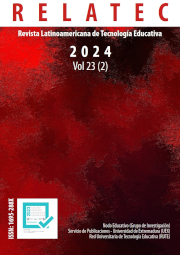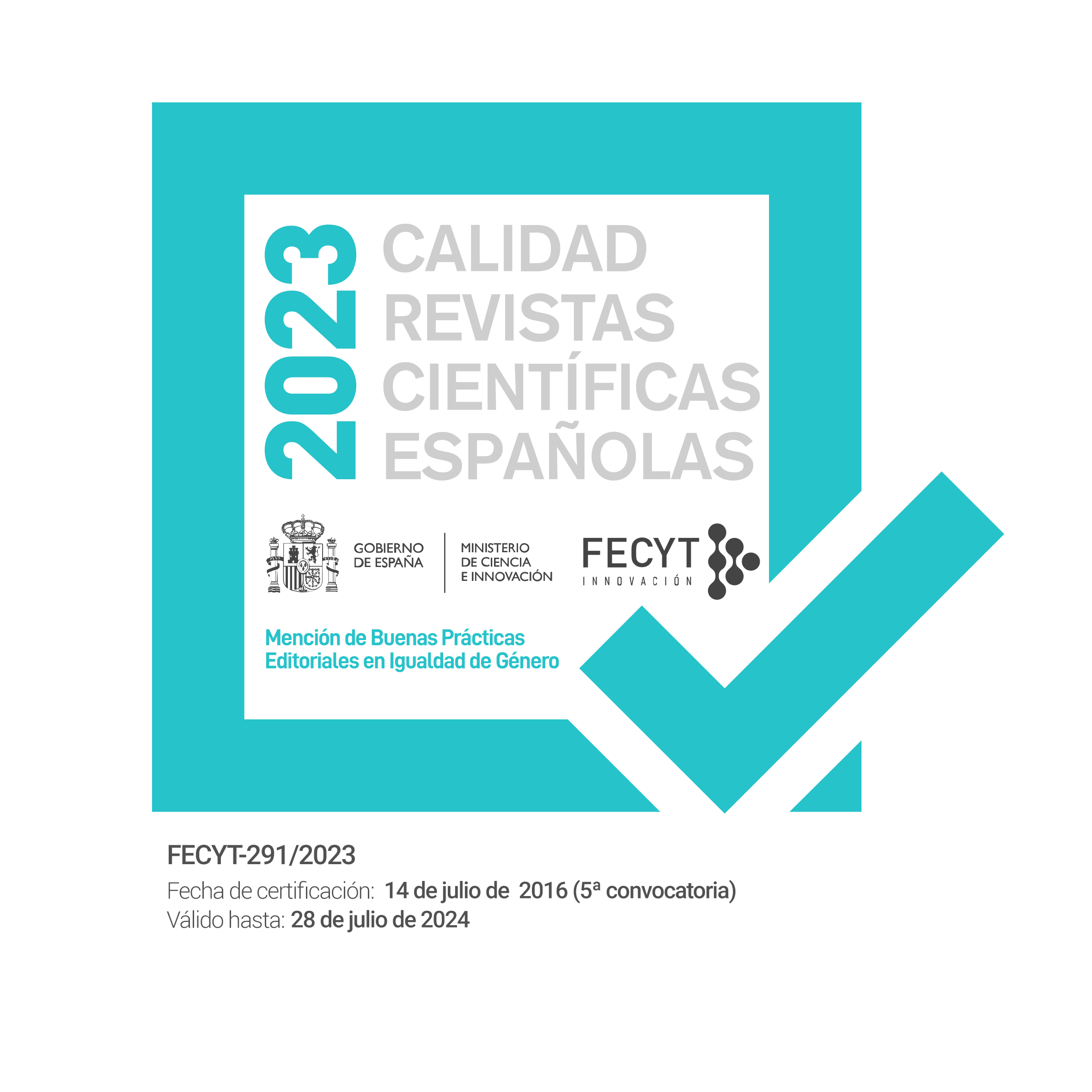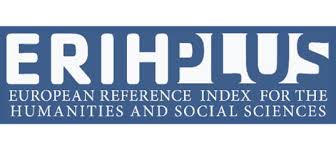Teachers' perceptions of the effects of the digital divide and educational inclusion
DOI:
https://doi.org/10.17398/1695-288X.23.2.51Abstract
This study seeks to analyze, through the perceptions of teachers, the impact of the digital divide and the relationship between educational inclusion and the use of ICTs in education. In line with Sustainable Development Goal (SDG) 4 of the United Nations Agenda 2030, which promotes inclusive and quality education. The methodology used was quantitative, employing an ad hoc and validated Likert-type scale, to measure the perception of teachers in three dimensions: perception towards the effects of the digital divide in teaching, perception towards the inclusive use of technologies in the classroom and inclusive education practices in the classroom. A total of 790 teachers in service at the primary level in western Honduras participated. The results indicate that there is a limited perception of the effects of the digital divide among the participating teachers. Likewise, differences were found between the way in which older teachers perceive the inclusive integration of technologies in the classroom. In addition, the participating teachers' understanding of inclusive education practices is mainly theoretical. These findings indicate the existence of an opportunity to improve awareness and practical understanding of technology integration and inclusive strategies in the educational context.
References
Ainscow, M. (2005). La mejora de la escuela inclusiva. Cuadernos de Pedagogía, ISSN 0210-0630, No 349, 2005, Págs. 78-83, 349, 78–83. https://dialnet.unirioja.es/servlet/articulo?codigo=1284484&info=resumen&idioma=SPA
Bezarra, R. M. (2020). Inclusión digital en Brasil, intervenciones políticas para romper la brecha digital. Universidad de Valladolid. https://www.educacion.gob.es/teseo/imprimirFichaConsulta.do?idFicha=604170#
Cabero, J. A., & Ruiz, J. P. (2017). Las Tecnologías de la Información y Comunicación para la inclusión: reformulando la brecha digital. International Journal of Educational Research and Innovation (IJERI), 9, 16–30. https://idus.us.es/handle/11441/66918
Cabero, J., & Córdoba, M. (2009). Inclusión educativa: inclusión digital. Revista de Educación Inclusiva, 2. https://dialnet.unirioja.es/descarga/articulo/3011853.pdf
Casanova, M. A. (2011). Evaluación para la inclusión educativa. In Revista Iberoamericana de Evaluación Educativa (pp. 1–12).
Castaño, C. (2009). La segunda brecha digital y las mujeres jóvenes. Quaderns de La Mediterrània = Cuadernos Del Mediterráneo, 11, 218–224. https://dialnet.unirioja.es/servlet/articulo?codigo=3020603&info=resumen&idioma=SPA
CEPAL. (2003). Los caminos hacia una sociedad de la información en América Latina y el Caribe (C. E. para América Latina y el Caribe, Ed.). https://www.cepal.org/es/publicaciones/2354-caminos-sociedad-la-informacion-america-latina-caribe
Cespón, M. T. (2021). TIC/TAC y COVID-19: uso y necesidades del profesorado de secundaria en Galicia. Digital Education Review, 356–371. https://doi.org/https://doi.org/10.1344/der.2021.39.%25p
Chisango, G., & Marongwe, N. (2021). The digital divide at three disadvantaged secondary schools in Gauteng, South Africa. Journal of Education (University of KwaZulu-Natal), 82, 149–165. https://doi.org/10.17159/2520-9868/I82A09
Escobar, J., & Cuervo, Á. (2008). Validez de contenido y juicio de expertos: una aproximación a su utilización. Avances En Medición, 6(1), 27–36. https://dialnet.unirioja.es/servlet/articulo?codigo=2981181
Fernandez-Batanero, J. M., & Colmenero-Ruiz, M. J. (2016). ICT and inclusive education: Attitudes of the teachers in secondary education. Journal of Technology and Science Education, 6(1), 19–25. https://doi.org/10.3926/JOTSE.208
Gallardo, A. R. (2006). La brecha digital y sus determinantes. UNAM.
García, N., Rivero, M. L., & Ricis, J. (2020). Brecha digital en tiempo del COVID-19. Hakedamos: Revista Educativa Digital, 28, 76–85. https://dialnet.unirioja.es/servlet/articulo?codigo=7602854
Decreto Ejecutivo Número PCM-005-2020, No. 35171 del 10 de febrero,2020:”Declarar, estado de emergencia sanitaria en todo el territorio nacional ante la probable ocurrencia de infección por coronavirus (2019-nCoV)…” – SAR, La Gaceta (2020). https://www.sar.gob.hn/download/decreto-ejecutivo-numero-pcm-005-2020
Gómez, D. A. (2019). Uso de las tecnologías de la información y la comunicación por universitarios mayas en un contexto de brecha digital en México. Región y Sociedad, 31, e1130. https://doi.org/10.22198/RYS2019/31/1130
Hernández Sampieri, R. (2017). Fundamentos de Investigación (R. Hernández Sampieri, Ed.). McGraw-Hill Interamericana.
Kardelis, S. K., Gómez, D. C., & Ortí, A. S. (2021). Educación y brecha digital en tiempos del COVID-19. Perfiles y problemáticas experimentadas por el alumnado juvenil para continuar sus estudios durante el confinamiento. Revista de Sociología de La Educación-RASE, 14(1), 63. https://doi.org/10.7203/RASE.14.1.18265
Llorent García, V. J., Zych, I., & Millán, J. C. V. (2020). University academic personnel’s vision of inclusive education in Spanish universities. Culture and Education, Cultura y Educación, ISSN 1135-6405, ISSN-e 1578-4118, Vol. 32, No 1, 202, Págs. 147-181, 32(1), 147–181. https://dialnet.unirioja.es/servlet/articulocodigo=7484410&info=resumen&idioma=ENG
Lugo, M. T., & Ithurburu, V. (2019). Políticas digitales en América Latina. Tecnologías para fortalecer la educación de calidad. Revista Iberoamericana de Educación, 79(1), 11–31. https://doi.org/10.35362/RIE7913398
Mandeville, P. B. (2005). El coeficiente de correlación intraclase (ICC) . In Universidad Autónoma de Nuevo León (Ed.), Ciencia UANL: Vol. VIII (pp. 414–416). Universidad Autónoma de Nuevo León. https://www.redalyc.org/pdf/402/40280322.pdf
Montenegro, S., Raya, E., & Navaridas, F. (2020). Percepciones Docentes sobre los Efectos de la Brecha Digital en la Educación Básica durante el Covid -19. Revista Internacional de Educación Para La Justicia Social, 9(3), 317–333. https://doi.org/10.15366/RIEJS2020.9.3.017
Motos, S. G., & Bonal, X. (2023). Educación a distancia, familias y brecha digital: lecciones del cierre escolar. Revista de Educación a Distancia (RED), 23(72). https://doi.org/10.6018/RED.541031
Navarrete, Z., Peralta, F. Y., & Ocaña, L. (2021). La Educación a Distancia para la Educación básica inicial: en vías del cumplimiento del ODS 4 de la Agenda 2030. In Innovación e Inclusión: políticas y estrategias de implementación (pp. 1–400). Sociedad Mexicana de Educación comparada.
Pérez-Escoda, A., Iglesias-Rodríguez, A., Meléndez-Rodríguez, Lady, & Berrocal-Carvajal, V. (2020). Competencia digital docente para la reducción de la brecha digital: Estudio comparativo de España y Costa Rica. Tripodos. Blanquerna School of Communication and International Relations-URL, 46(46), 77–96. https://raco.cat/index.php/Tripodos/article/view/369937
Quezada Castro, M. del P., Castro Arellano, M. del P., Oliva Núñez, J. M., Gallo Águila, C. I., & Quezada Castro, G. A. (2020). Alfabetización digital como sustento del teletrabajo para docentes universitarios: hacia una sociedad inclusiva. Conrado. http://scielo.sld.cu/scielo.php?pid=S1990-86442020000600332&script=sci_arttext&tlng=pt
Rodicio-García, M. L., Ríos-De-Deus, M. P., Mosquera-González, M. J., & Abilleira, M. P. (2020). La brecha digital en estudiantes españoles ante la crisis de la Covid-19. Revista Internacional de Educación Para La Justicia Social 9, 3(3), 103–125. https://doi.org/10.15366/RIEJS2020.9.3.006
Sanhueza, S., Maribel, H., Azcárraga, G., Bravo, L., & Resumen, C. (2012). Actitudes del profesorado de Chile y Costa Rica hacia la inclusión educativa. Cadernos de Pesquisa, 42(147), 884–899. http://educa.fcc.org.br/scielo.php?script=sci_arttext&pid=S0100-15742012000300013&lng=pt&nrm=iso&tlng=es
SEDUC. (2020). Informe de estadísticas educativas 2020 Secretaría de Educación de Honduras. https://sace.se.gob.hn/
Siegel, S., & Castellán, N. J. (1995). Estadística no paramétrica aplicada a las ciencias de la conducta. Trillas.
Sosa Díaz, M. J., & Valverde Berrocoso, J. (2020). Perfiles docentes en el contexto de la transformación digital de la escuela. Bordón: Revista de Pedagogía, ISSN 0210-5934, ISSN-e 2340-6577, Vol. 72, No 1, 2020, Págs. 151-173, 72(1), 151–173. https://doi.org/10.13042/Bordon.2020.72965
Suriá Martínez, R. (2011). Percepción del profesorado sobre su capacitación en el uso de las TICS como instrumento de apoyo para la integración del alumnado con discapacidad. Profesorado: Revista de Curriculum y Formación Del Profesorado, ISSN-e 1989-6395, ISSN 1138-414X, Vol. 15, No 2, 2011, Págs. 299-314, 15(2), 299–314. https://dialnet.unirioja.es/servlet/articulo?codigo=4089879
Torrego, L. E. (2022). Manual de acción para la inclusión. Editorial GID Manzana. http://www.publicaciones.uva.es/UVAPublicaciones-13408
UNESCO, CEPAL, & UNICEF. (2022). La encrucijada de la educación en América Latina y el Caribe. Informe regional de monitoreo ODS4-Educación 2030. UNESCO. https://hdl.handle.net/11362/48153
UNICEF. (2020). El aprendizaje debe continuar. https://www.unicef.org/lac/media/11791/file/El-aprendizaje-debe-continuar.pdf.pdf
Vega-Gea, E., Calmaestra, J., & Ortega-Ruiz, R. (2021). Percepción docente del uso de las TIC en la educación inclusiva. Pixel-Bit, 62, 235–268. https://doi.org/10.12795/PIXELBIT.90323
Wenhong, C., & Wellman, B. (2005). Charting Digital Divides: Comparing Socioeconomic, Gender, Life Stage, and Rural-Urban Internet Access and Use in Eight Countries. In W. H. Dutton, B. Kahin, R. O Callaghan, & A. W. Wyckoff (Eds.), Transforming Enterprise The economic and social implications of information Technology.
Yildiz Durak, H. (2021). Preparing pre-service teachers to integrate teaching technologies into their classrooms: Examining the effects of teaching environments based on open-ended, hands-on, and authentic tasks. Education and Information Technologies, 26(5), 5365–5387. https://doi.org/10.1007/s10639-021-10511-5
Downloads
Published
Issue
Section
License
Copyright (c) 2024 Jorge Luis Aguilar-Martínez, José Carlos Sánchez-Prieto, Fernando Martínez-Abad

This work is licensed under a Creative Commons Attribution-NonCommercial-NoDerivatives 4.0 International License.
Authors who publish in this journal accept the following conditions:
1. The Author retains copyright in the article. Upon acceptance of the article, the author shall grant to the Publisher the right of first publication of the article. with the dcoument registered with the Creative Commons Attribution-NonCommercial-NoDerivative 4.0 International (CC BY-NC-ND) license, which allows to third parties to use what is published whenever they mention the authorship of the work and the first publication in this journal.
2. Authors can make other independent and additional contractual agreements for the non-exclusive distribution of the article published in this journal (eg, include it in an institutional repository or publish it in a book) provided they clearly indicate that the work was published for the first time in this journal.
3. Authors are allowed and recommended to publish their work on the Internet (for example on institutional or personal pages) before and during the review and publication process, as it can lead to productive exchanges and a greater and faster diffusion of published work (see The Effect of Open Access).









